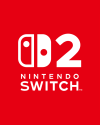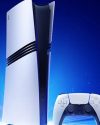Sony explains more details about the PlayStation 5
This week Sony’s Mark Cerny, System Architect for the PlayStation 5, delivered a presentation on the new console. You can watch the full presentation in a 52 minute video above. In it, he explained the philosophy behind Sony’s approach to the console, and how the system will benefit both players and developers alike.
Cerny began by outlining the three key principles behind the console’s design: finding new dreams, balancing evolution and revolution, and listening to developers.
When it comes to listening to developers, Cerny described how every few years he tours about two dozen different developers. While visiting, he asks the companies what they’re after from Sony and their hardware. One of the most-requested features was one of the first revealed for the PlayStation 5, a solid-state drive (SSD) that can be used for storage.
On this note, Cerny described how the PlayStation 4’s hard drive allows developers to load about 1GB every 20 seconds. The PlayStation 5 allows for 2GB of data to be loaded in just 0.27 seconds.
An SSD in the PlayStation 5 will allow developers to remove long loading screens. Some games hide these screens, such as the long corridors in Half-Life 2, or the cutscenes during fast travel in Marvel’s Spider-Man. The new drive also means that developers can load a game’s world as the player moves around it, which should remove pop-in and low-quality visuals as the higher quality assets are loaded in.
Cerny added that developers can now access much more RAM for their games. Combined with the SSD, there should be no need for huge patch installations for games on the PlayStation 5. Most of the PlayStation 4’s 8GB of RAM is used by games to store anything that may need to be loaded within the next 30 seconds of gameplay. The combination of the PlayStation 5’s 16GB of RAM and its SSD means that everything needed for the next second or two needs to be stored, nothing more. This is because the SSD moves data so quickly to and from the system’s RAM.
The PlayStation 5 will come with a 825GB SSD as standard, but there will be options for consumers who want to expand that. Large external hard drives will be available for PlayStation 4 games, but PlayStation 5 games require additional SSD storage.
Prior to the console’s launch, Sony will be testing M.2 drives to find out which ones support the internal systems, as well as the physical size available. The console has a port where M.2 SSDs can be installed, but a list of the supported drives isn’t expected to be available until after the console launches.
Moving onto balancing evolution and revolution, Cerny said that it was important to Sony to provide a familiar landscape to developers, whilst also improving the features on the console. While it allows for improved development, it will also be backwards compatible with PlayStation 4 games. As a result, features such as ray-tracing and primitive shaders are optional.
When it comes to backwards compatibility, Cerny explained that the PlayStation 5 GPU can run legacy modes for the PlayStation 4 and PlayStation 4 Pro. The new console will also be able to ‘boost’ certain PlayStation 4 games, but these will be tested on a case-by-case basis. At launch it is expected that nearly every one of the top 100 PlayStation 4 games will be supported on the new console. It’s likely that most of these will be first-party games such as The Last Of Us Part 2, Ghost of Tsushima, and Death Stranding.
The final point that Cerny spoke about was finding new dreams with the PlayStation 5. This is the category of features that developers didn’t specifically ask for, but that Sony believed would be nice to offer.
An example of one of these features is 3D audio. Using Tempest 3D Audio Tech the company aims to give players more presence and locality in games. The idea behind this technology is complex, but put simply it replicates how sounds are manipulated by the environment. Combined with a person’s natural ability to decipher how sounds change based on location, it creates a much more immersive experience.
Cerny explained that the PlayStaiton 5 will launch with five HRTF (head-related transfer function) profiles. This will let players test which one works best for them, making for the best experience possible in the games they play.
Before he ended, Cerny said that the fun part is just starting. Now is the time for developers to take the pieces that Sony has made available to them, and create some truly incredible games for people to play.


